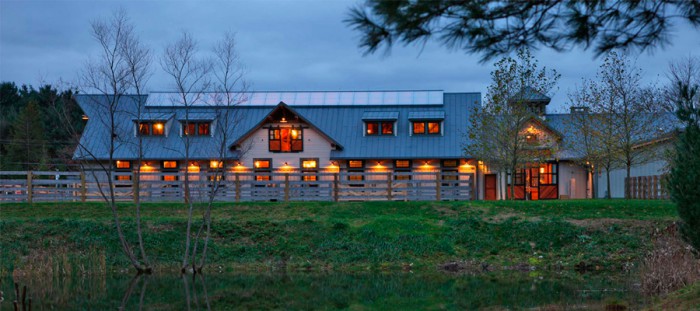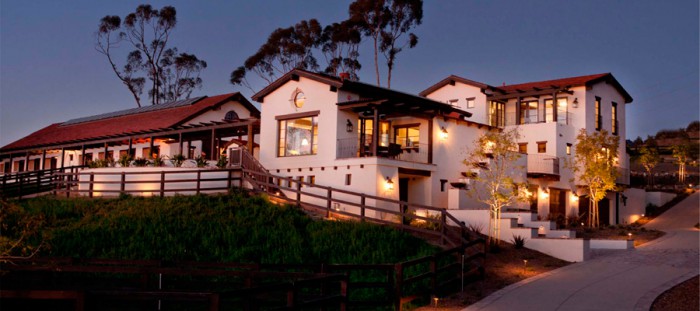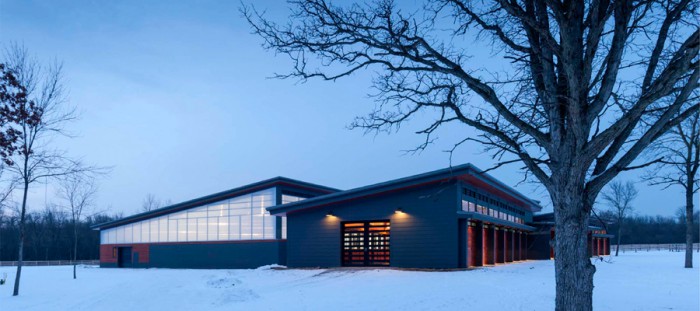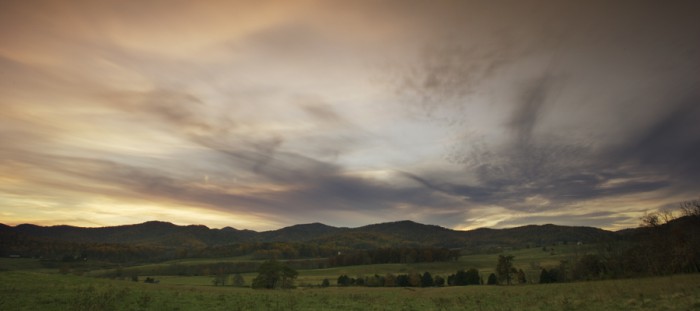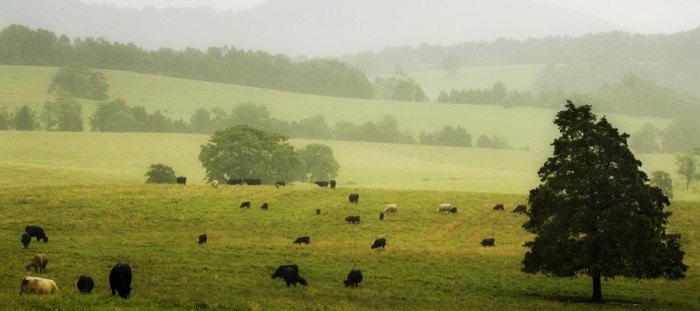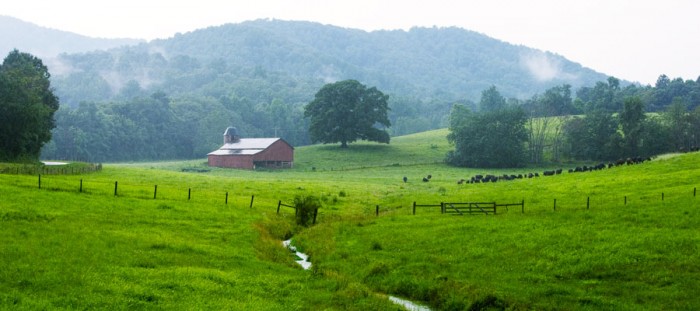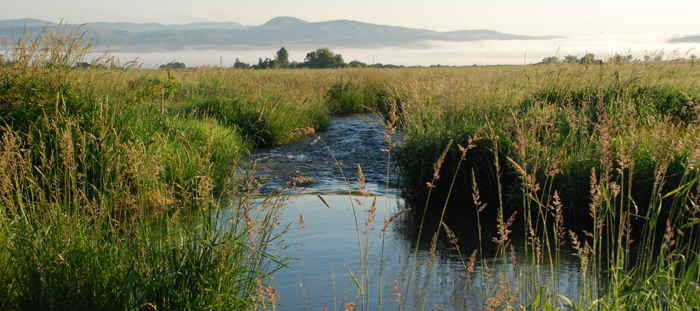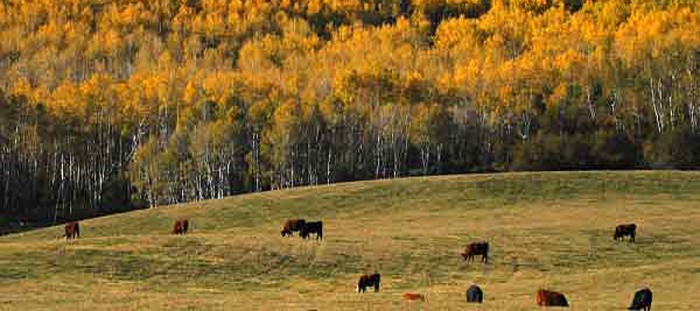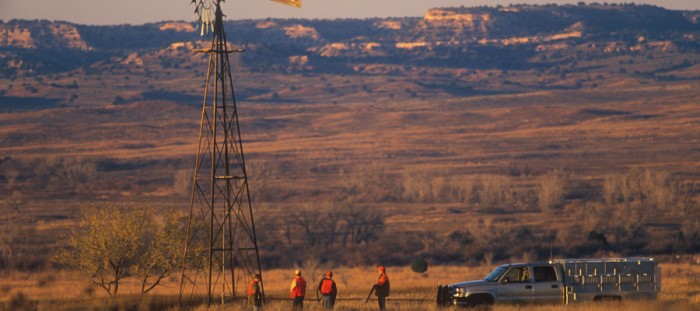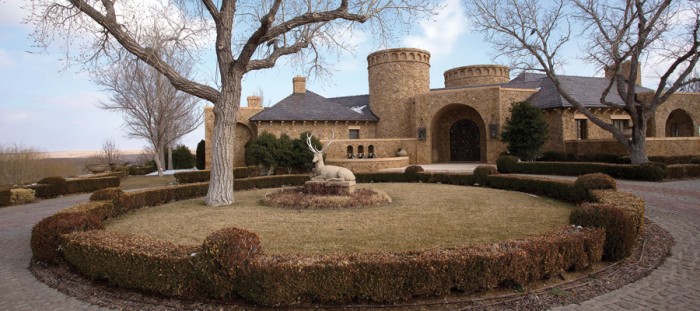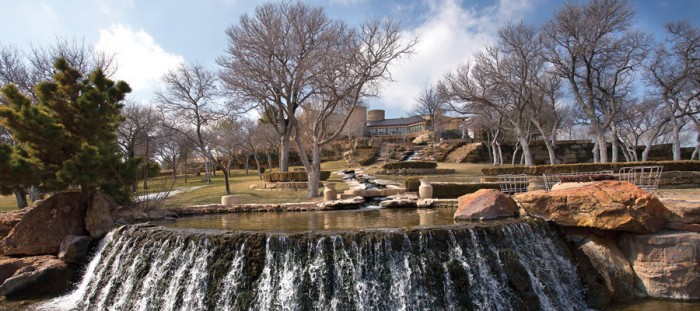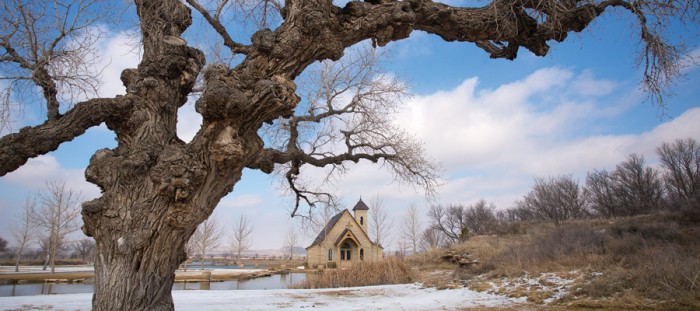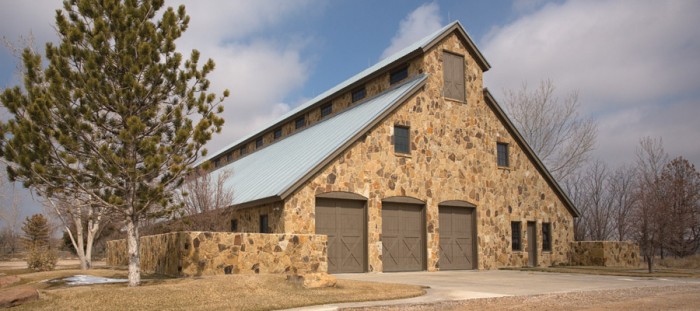Field Sport Concepts, Ltd. is pleased to announce that we have opened an office in Austin, Texas to complement the various FSC affiliates located throughout the country.
From hosting birding competitions to offering world-class hunting opportunities to pursuing innovative water conservation efforts, the region’s longstanding commitment to preserving the natural landscape made Austin a natural choice for our new branch.
The office will help FSC build a stronger presence in the Southwest, an area where we would like to spend more time and from where we have received many inquiries about potential field sport and land conservation projects and activities. We hope this will allow us to better serve clients not only in Texas but also in the entire Southwest.
Our Austin office will be managed by Corey Hoffpauir, Senior Vice President for Development at Panorama International (www.panoramaintl.com) and a lifelong sporting enthusiast. A long-time affiliate of Field Sport Concepts, Mr. Hoffpauir graduated from LSU and spent the first 7 years of his career as the Chief Campus Planner for the University of Texas System. Among the projects with which he was engaged are the Waller Creek Master Plan at The University of Texas at Austin; the master plans for the academic campuses of U.T. San Antonio and U.T. Dallas; and the medical campuses at UTMB Galveston, UTMB Dallas, and UTMB Houston (Texas Medical Center).
Aside from numerous residential, institutional and commercial projects, Mr. Hoffpauir is noted for his work in golf course design and routing having been involved with the planning and design of Austin Country Club, the Barton Creek Coore Crenshaw Course, and the Horseshoe Bay Golf Course among many others. He also developed the master site plan and landscape design for the spa, hotel, club, and conference center at Barton Creek where he served on the founding Board of Governors.
And for those of you who appreciate gorgeous photography of the Texan countryside, we encourage you to take a look at this stunning collection from the Official Texas State Photographer and friend of Field Sport Concepts, Wyman Meinzer.
For more information about our new office or to discuss how Field Sport Concepts can assist you in planning your field sport or conservation property, please give us a call or send us an email.
434-979-3846
info@fieldsport.com
We have been long-time fans of Jim Stenson’s emagazines which include The Contemporary Wingshooter as well as The Contemporary Sportsman published by Integrated Digital Publishing.
As Managing Editor and Publisher, Jim has invited us to contribute our thoughts on the array of field sport opportunities available to rural landowners and outdoor enthusiasts for planning their dream sporting retreats.
“In the Field” is a quarterly column and will bring together examples of our past work, analyses of financing strategies, designing for the preservation of wildlife habitat and anecdotes from our favorite outings. We look forward to hearing your thoughts on our first article which is available now; and we would certainly welcome any ideas you might have for future columns!
Readers of The Virginia Sportsman should keep an eye out for the article on one of our favorite projects, The Fork Farm & Stables. The Fork is a spectacular equestrian and shooting resort that played host to the 2008 U.S. Olympic Equestrian Team’s three-day eventing trials. Featuring the work of two of our nationally recognized affiliates, McKee Carson and John Higgins, The Fork is certainly one of our prouder efforts. McKee Carson has been active with The Fork since the early stages, contributing the initial feasibility study as well as on-going land planning services. John Higgins played a central role in designing and developing The Fork’s world-renowned trap shooting courses.
Celebrating its 35th anniversary this year, McKee Carson is a Charlottesville-based landscape architecture, land planning and civil engineering firm. Low impact development and sustainability are hallmarks of McKee Carson’s philosophy and practice. Committed to designing environments of enduring quality and beauty, it is our belief that there is a tried and true relationship between good planning and the creation of economic and social value. McKee Carson is the founding affiliate and provides the land planning and design component for Field Sport Concepts projects.
Field Sport Concepts frequently works with professionals in the real estate sector who are associated with the marketing and sales, improvement or conservation of large tracts of land. In addition to private landowners these may include:
Farm, Ranch and Recreational Land Brokers
A Broker’s toolbox is full of resources for helping clients buy and sell property. Think of us as another tool in your toolbox.
By partnering with Field Sport Concepts, brokers can offer their clients access to an affiliation of world-class land planning and design consultants as well as equine, shooting and hunting, fishing and habitat specialists. FSC has extensive experience assisting landowners in preparing conceptual land use plans to facilitate a property’s sale.
Additionally, we have found that many buyers can be intimidated by the complexities of the initial steps associated with improving their new property. They may be unsure as to how to assemble a design team, which areas to focus on, and in many cases, what even needs to be done. FSC can alleviate those concerns by offering a process that pulls together the essential consultants for each individual project; consultants whose experience collaborating with each other is a strength of our affiliation.
We have a long history of assisting clients with identifying creative strategies for financing their plans to fruition. Such approaches include plans to secure tax advantaged conservation easements, programming for encouraging paid hunting and fishing, conservation communities, the monetization of ecosystem services, and many others.
Appraisers and Attorneys involved with Conservation Easements
As a company committed to conservation and the economic benefits of sustainable land planning, we have, over the years, designed and prepared practical and feasible development plans which have been used to help determine the hypothetical “post development” value by land appraisers or attorneys involved with conservation easements for allowable tax credits. Often this work has been done in conjunction with the master planning for the vision of the property to which the owner truly aspires.
Field Sport Enthusiasts
Enjoying the outdoors through field sports and active recreation is at the core of our business philosophy. Whether it be sneaking upstream in search of rising trout or watching your pointers work a field edge, the connection with our environment is simultaneously inexplicable, liberating, and addictive. If you are reading this, we know you feel the same way. Combining our passion for the outdoors with our wide range of expertise, we have the tools to bring that connection to you.
– Field Sport Facility / Venue Design and Programming
– Ecosystem Services and Conservation Easements
– Water Resource Planning, Stream Restoration, Wetlands Delineation / Mitigation
– Agricultural Resource Management and Agritourism / Ecotourism Consulting
– Architecture, Landscape Architecture, Land Planning, Civil Engineering
You can check out some examples of what we can do at Terra Chula Plantation and Overlook Resort.
Farm & Rural Land Owners
There are few experiences in life that are as genuinely peaceful as an early morning walk to drink in the beauty of your land. If, on the other hand, you’re finding yourself longing to improve the food plots near that stand of trees or perhaps restoring that stream to promote trout populations, Field Sport Concepts can be an invaluable asset to you. With an approach that is based simultaneously in science, aesthetics, and extensive experience, the affiliates of Field Sport Concepts are uniquely positioned to provide a comprehensive approach to improving farms, ranches, estates, and other rural lands of all sizes.
Conservationists
A major challenge facing conservationists today is how best to balance the preservation of the natural landscape and plant and wildlife habitat while also ensuring that such efforts are economically sustainable. Developing and implementing strategies to address that challenge is at the core of Field Sport Concepts’ mission. Whether you are looking to add shooting and fishing programming, create a network of trails, establish a working landscape, or even place all or part of your land under conservation easement, the affiliates of FSC have the combined expertise to help you protect and enhance your holdings. Learn more about our approach to recreation-based conservation by clicking here.
Ranch & Farm Brokers
Although the real estate market has been challenging the past few years, the appeal of rural land remains strong. However, buyers may appreciate some guidance with examples of how their ideas can be combined with conservation measures to produce results in an economically viable manner. Field Sport Concepts can collaborate with you to develop conceptual plans that demonstrate how the land you represent might be utilized by future owners. Check out the many ways in which we can help you and your client more effectively market their land with such projects as Little Mountain Ranch and Panorama Farms.
Equestrian Enthusiasts
Calling all horse enthusiasts! Whether you are looking to build new equine facilities or upgrade existing ones, we know your top priority is ensuring your horses’ health and safety. Take comfort in knowing it’s ours as well. With over 25 years of designing equestrian facilities, Field Sport affiliates have a long and distinguished history of satisfied customers. From understated equestrian farms to world-class arenas, our affiliates can enable you to accomplish your goals. View some of our work at The Fork Farm & Stables, Sagamore Farm, and The Oaks
Land Developers
If developing a conservation community is something that you have considered, Field Sport Concepts will be an invaluable addition to your team. With our wide range of expertise, we can provide you with detailed site analysis, conceptual designs, and master planning that will enable you to realize your vision for the development. To learn more about our services, check out our work at Bundoran Farm and Jackson River.
“It was the perfect day for a hunt. And by that I mean it was cold, damp, and miserable. Cradling the steaming cap of my thermos, though, I could not have been more ecstatic. Years of meticulous planning and many, many hours of hard work had led to this point. Sitting here at the confluence of the Pee Dee and Rocky Rivers in this blind was the prize, and I couldn’t have imagined a better one. I could already taste the meal of duck breast, roasted potatoes, and asparagus I had been salivating over for all of those months and was finally going to have tonight.”
And so began our inaugural column for one of our favorite publications, “The Contemporary Wingshooter.” Published quarterly by Jim Stenson, TCW is a fantastic quarterly e-magazine focusing on a range of topics within the realm of wingshooting and conservation. We can’t tell you how excited we are to be partnering with TCW to launch our new column, “In the Field.” Through it, we look forward to showcasing some of our premiere projects as well as communicating our commitment to preserving rural traditions through the implementation of sporting programming and conservation practices.
In this first article, titled “Fork in the Road,” we invite you to learn about our work at The Fork Farm & Stables in North Carolina. Encompassing a comprehensive approach to fostering healthy populations of upland game birds, we partnered with the owner, to pursue strategies that would not only yield sporting opportunities, but that would also restore the surrounding ecosystems. To check out our column, head to www.thecontemporarywingshooter.com, set up a free account, and turn to page 72 to start reading. And while you’re there, check out our ad on page 60!
What is the #1 rule to successful investing? Buy low, sell high.
And according to The Land Report, that’s just what Jay Ellis has been doing (the article begins on page 17). Having originally been with Morgan Stanley’s trading desks, Mr. Ellis saw the 2008 financial crisis, and more specifically the plunge in land values, as a prime buying opportunity. But unlike many land investors, he was not intending to simply make a couple minor improvements and then put it back on the market for a quick sale. Rather, he was looking to create pristine sporting ranches for high-end buyers.
“Everybody wants a trophy ranch,” Ellis said. “What nobody is doing is creating trophy ranches for the market.” With $30 million in backing (and more on the way) from investors like T. Boone Pickens, Ellis created Sporting Ranch Capital and has been working hard to acquire ranches with untapped potential. He and his teams of experts then set to work improving stream habitats, planting feed plots, and luring big game and water fowl back to the properties.
For Ellis, the most important feature of a ranch is the water. The more of it, the more valuable the property. But he also ensures that the ranches are within 40 minutes of airfields, small towns, and ski resorts. Most have been exhausted by agriculture but have the potential to be restored, especially the fishing habitats. Indeed, one of the fund’s consultants was tasked with identifying C- and D- rated ranches but which had to have the potential for A+-rated fisheries.
Of course, Ellis and his team don’t do everything for the future landowners. For example, while they create spectacular entrances and lay miles of buck-and-rail fencing, they refrain from building any homes. This, Ellis contends, allows buyers to see the properties as “blank canvases” on which they can create their own feel.
With five ranches in its portfolio, Sporting Ranch Capital recently closed out its initial $30 million fund. But, with $50 million planned for Fund II, Ellis and his team are already setting their sites on the next round of acquisitions.
This guest post comes from our friends over at Ranch Resources. Based in Montana, they are the premier independent ranch management company in Montana with a reputation for providing the broadest scope of knowledge and experience in resource management while fostering long term relationships with their clients.
Natural resource management that affects change in the landscape, and in a direction that ultimately meets the ranch owner’s goals is more an art than a science. This change can take place by intentional decisions, unintentional consequences, or simply doing nothing. One way or another, change will happen. Directing it in meaningful purposeful ways is the challenge.
Any ranch has a myriad assortment of management goals and objectives: agricultural revenue, wildlife abundance and diversity, noxious weed control, preserving special areas, healthy lifestyles, maintaining western culture, habitat improvement, and for some people, spiritual renewal. Oftentimes these goals provide conflicting management scenarios and directing results in purposeful directions can seem unachievable. For example, maximizing agricultural production does not achieve good wildlife diversity. Balancing these conflicting goals to meet the ranch owner’s desires and establishing and defining realistic expectations, can best be achieved through professional management.
A recent situation highlights this need for professional balance.
A beautiful 1200 acre property in Montana hosts an amazing diversity of habitats – chief among them are extensive aspen stands. Ensuring the aspen remain healthy was a primary concern for the owner. Historic grazing by cattle and increased pressure from elk and deer browsing had a significant effect on the aspen’s regeneration, so that the majority of aspen stands were old and in a declining condition. In addition to this goal, the owner also wanted livestock grazing on the ranch to generate revenue and to maintain the local agricultural culture of the area. Finally, the owner wanted to maintain the elk herd on his property to enjoy throughout the year.
Removing cattle entirely to promote regeneration would not meet the owner’s goals of generating revenue and maintaining that cultural aspect of the property. Additionally, removing grazing results in a decline in forage quality, which in turn results in elk leaving the ranch to find better forage. How then do you manage these apparent conflicting land and cultural objectives?
Through an understanding of the physiology of aspen, we know that protein levels in young shoots peak in the fall and winter months. It is during this time that browsing intensity increases. Historically, a small herd of cattle (around 50 head) grazed the ranch between October and February; the worst time of the year to be grazing cattle, in terms of aspen health.
To find a better balance for the land owner, Ranch Resources started negotiations with the grazing lessee and moved the grazing period to the late spring/early summer months. Instead of grazing 50 head, we are now grazing 200 head and for only 4-6 weeks. These changes provide an opportunity for all of the land owner’s goals to be met. Cattle are grazing the ranch, generating revenue and at a time and duration to have minimal impact on regenerating aspen. The cattle keep the grass resource healthy and productive, which encourages elk to spend more time on the ranch for the owner’s enjoyment.
This is a great example of how we generate and implement solutions for our clients. Understanding our clients goals, maintaining good relationships with lessees, the ability to identify natural resource issues, knowledge of the latest scientific concepts, and a willingness to find balance in management activities, all coalesce in our professional service to our clients. You will not find this ability or passion for solutions in any other management company in Montana.
Image courtesy of Ranch Resources
We wanted to pass along a story written by Chad Love for our good friends at Covey Rise Magazine about the work that T. Boone Pickens has undertaken to reclaim an abused Texas panhandle landscape in order for quail to return and thrive.
Roberts County lies in the northeast part of the Texas panhandle, its 924 square miles of high, lonesome emptiness occupied by fewer than 1,000 hardy and independent souls. Some of the most extreme weather on the planet – tornadoes, drought, blizzards – can be found there.
It is also a place where the whims of man – mortal dreams writ both large and small – are often shattered upon the face of nature’s unyielding anvil. But there is one dream that, through sheer force of will, has not only refused to shatter but has grown into something unmatched in this world.
That dream is Mesa Vista Ranch, and the force of will that relentlessly forged it into existence belongs to T. Boone Pickens, who 42 years ago set out on what many thought a Quixotic fool’s quest: to shape and mold this harsh, abused landscape into a quail-hunting paradise the likes of which had never before been seen, to dare bend unyielding nature itself into his own unique vision of perfection.
Some said it couldn’t be done. And then T. Boone Pickens went out and did it. As it turns out, Mesa Vista is an apt metaphor for the man himself.
By now, the story of the legendary oilman, corporate raider, hedge-fund manager and clean energy advocate is well-known. Born in Holdenville, Okla., in 1928, Pickens graduated from his beloved Oklahoma State University in 1951 with a degree in geology. However, the prospect of a life spent looking at rocks apparently didn’t fit Pickens’ restless nature. So after 3 1/2 years of working for Phillips Petroleum, he quit and founded Mesa Petroleum, which would grow into one of the largest independent oil and natural gas companies in the U.S.
During the ’80s, Pickens became famous – some would say notorious – for his attempted takeovers of larger energy companies. In 1997 he founded the BP Energy Fund, which later became BP Capital Management, a multibillion-dollar energy investment fund that would make Pickens a billionaire.
But that’s just the broad overview. The real meat of Pickens’ life has filled several books. Like most true originals, Pickens is complex and fascinating, hard to nail down and even harder to summarize. But if you could pick one defining symbol, it would most likely be that small, unobtrusive ground-dwelling bird that drives the passions of so many kings and paupers alike – the bobwhite quail.
In 1940s and ’50s Oklahoma, bird hunting — not “quail hunting,” but “bird hunting” – was about as close to a non-religious religion as the state had. In those halcyon days before the long, slow decline of quail populations and the subsequent rise in competing activities like deer hunting, everyone was a bird hunter. Pickens’ family was no different. His father was an avid outdoorsman and quail hunter who always kept pointing dogs, and young Pickens inherited that passion. Throughout his career, his zest for business has been matched and exceeded by his passion, or perhaps more accurately, his obsession, for quail hunting.
It was while living in Amarillo that Pickens first hunted the area that would later become Mesa Vista. He came away impressed, and convinced that the Texas panhandle had the potential to be a better quail-hunting region than the much-more celebrated south Texas area.
To that end, in 1971 Pickens bought 2,900 acres of overgrazed Roberts County ranch land situated along the panhandle’s most dominant geographical feature, the Canadian River. It was a decidedly modest beginning to what would become a 100-square-mile quail empire.
“I was doing a lot of field work at the time, and I bought that first piece from a guy who was having some financial trouble,” recalls Pickens. “I got it for $69 an acre. I bought 10,000 more in 1982, then the next piece in 1988 and so on. I always envisioned having 100 sections, and then I started making money and wound up with 68,000 acres.”
Pickens says his wife wanted him to buy something in Vail, or maybe on a nice beach somewhere, but birds can’t be hunted in Vail or on the beach. So the man obsessed with bobwhite quail turned his back on the conventional trappings of wealth and instead set about creating his own.
It would be a daunting task. The Texas panhandle had birds, to be sure, but overgrazing had reduced much of the available habitat. Drought and bad weather often further decimated the population. Panhandle quail rode a roller-coaster along the razor’s edge of survival. The question was how to level out that roller-coaster. Unfortunately, the prevailing attitudes toward quail management at the time could be summed up thusly, “When it rains there’s quail and when it don’t, there ain’t, and there just ain’t nothing you can do about it otherwise.”
Pickens didn’t buy this argument, and thus began the great Mesa Vista Never-Ending Quail Experiment. Over the years the pace and breadth of this open-air laboratory experiment have waxed and waned with the tides of Pickens’ fortunes, but it all started from two basic premises: water and cattle. Namely, it was a helluva lot of the former, and damn few, if any, of the latter.
In theory, a quail’s needs are simple: food, water and cover. Give him those, and Bob should thrive. So Pickens began by drilling water wells, tapping into the vast Ogallala Aquifer and installing miles of underground water lines that fed tanks and overflow ponds. He gradually got rid of most of the ranch’s cattle to improve cover, and installed feeders to help bolster quail survival. Pickens, however, is always tinkering around the margins, trying something new. “We give them everything they need,” Pickens says with a smile. “Do that and the quail can take care of the rest.”?
The results of Pickens’ generosity speak for themselves. The birds are there. In fact, the birds are always there, year in and year out. They may dip in bad years, but a bad year on Mesa Vista is better than most good years anywhere else. The quail hunting is intensively managed and exhaustively recorded.
“We’ve averaged 1,000 to 1,500 birds per year every year since we started installing water lines,” says Pickens, “Some years a little less, some years a little more.” Considering the size of the ranch, it is lightly hunted, and many large chunks of it see neither dog nor hunter.
This wealth of wild birds and the natural cover to sustain them have also been a – pardon the pun – boon for quail researchers. Mesa Vista has participated in a number of quail research projects, and Pickens likes to point out that researchers have never had any problem trapping their quail quota off his ranch.
But Mesa Vista and T. Boone Pickens are about more than just great quail hunting. As the reality of Pickens’ original vision has grown over the years, so too has his commitment to bobwhite quail research and conservation. Pickens, as a member of the Dallas-based Park Cities Quail conservation nonprofit, has donated money and ranch access to ongoing research projects to organizations like the Rolling Plains Quail Research Ranch. But he also donates hunts to the chapter’s annual banquet that are routinely auctioned for hundreds of thousands of dollars. That money then is sunk back into research and conservation efforts.
His influence has led the chapter to name its top annual honor the T. Boone Pickens Award, given to sportsmen who have “distinguished themselves by living a life of adventure, love of the outdoors, respect for natural resources and most of all those who have demonstrated a spirit of giving back and making it possible for others to enjoy the sporting life.”
Such is the grandeur of Mesa Vista and T. Boone Pickens himself. But here’s the thing: While Pickens the persona may seem larger than life, Pickens the person is about as affable and down to earth as a farmer in a feed store. He will graciously sit down and, over a bowl of cereal, tell you a seemingly endless stream of ribald jokes, homespun homilies and what friends and family call “Booneisms” – pungent observations on the human condition.
For example, “If someone ever offers you a bird dog, don’t take it. You wouldn’t just give someone a bird dog that was actually worth a damn, would you? Hell no, you’d keep it yourself, so why would someone give one to you?”
He is justifiably proud of what he has accomplished, and at 84, Pickens is still a restless blur of motion and pure kinetic energy. He can effortlessly broker large deals over a cell phone with one hand while using the other to drive down a mud-slick ranch road, pointing out what he’s done and what he still plans to do. With a sharp, penetrating mind, he asks numerous probing questions, and a few minutes with him will make you wonder who is the interviewer and who is the interviewee.
And he is eminently, even legendarily practical and not much given to finery or ostentatious gestures. He could have any shotgun he wants, but he shoots a well-worn 20-bore Browning Superposed given to him by a friend in 1958. He could travel anywhere in the world, but when he’s not busy investing, preaching the gospel of clean energy or making media appearances, he relaxes and entertains at his favorite spot.
Such is the allure of Mesa Vista. Even forces of nature need respite, and over the years Pickens has shaped this unique spot into not only an engineering and wildlife conservation showcase, but also a personal sanctuary. It has gone from 2,900 worn-out acres acquired for $69 an acre in 1971 to paradise. And that’s exactly how T. Boone Pickens wants it. When asked if he ever travels to shoot quail, he replies, “Why would I? Oh, every now and then I’ll hunt somewhere else, but this is home.”
We would like to thank Covey Rise Magazine for allowing us to share this full published story with our subscribers. To check out previews of other great articles and some truly beautiful photography visit their website and consider subscribing to Covey Rise Magazine (www.coveyrisemagazine.com).
Photography by Terry Allen



